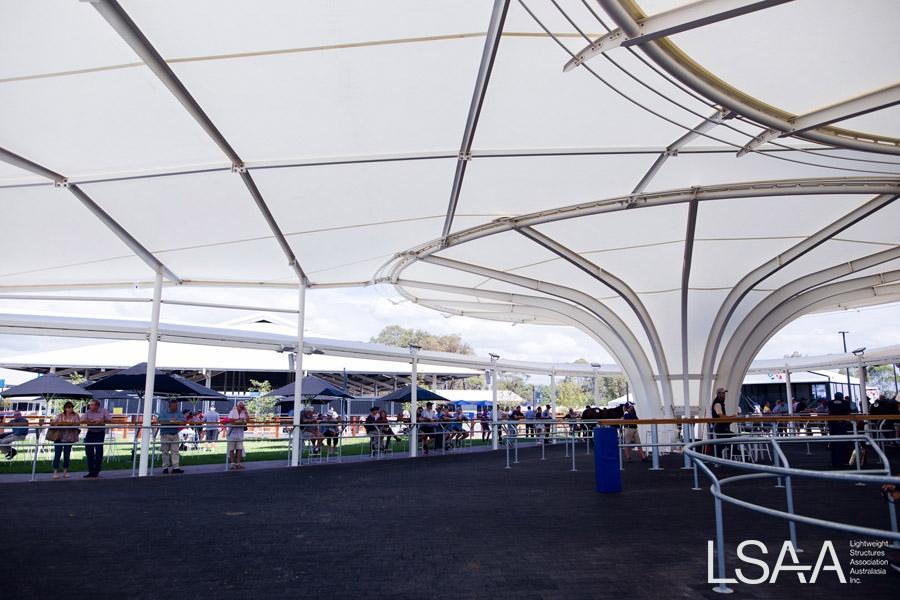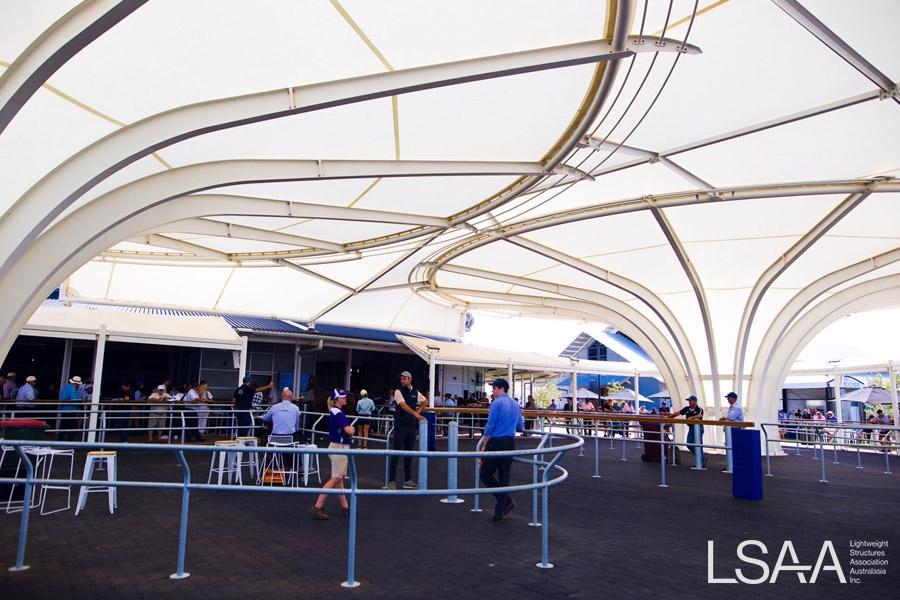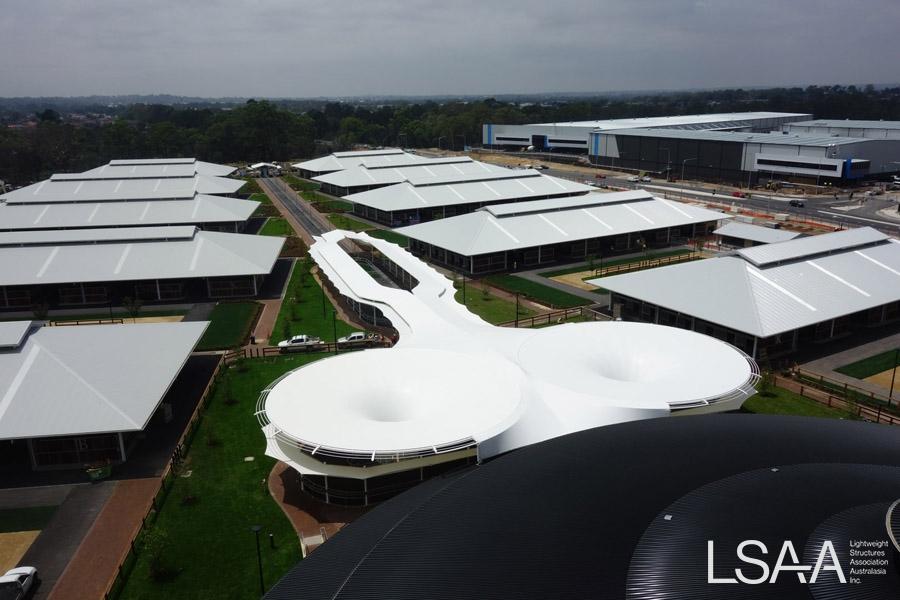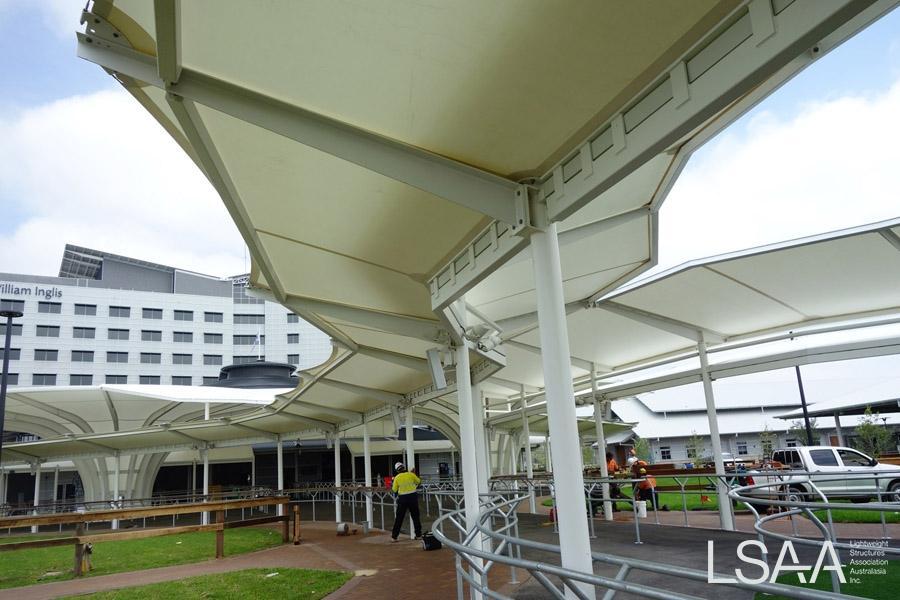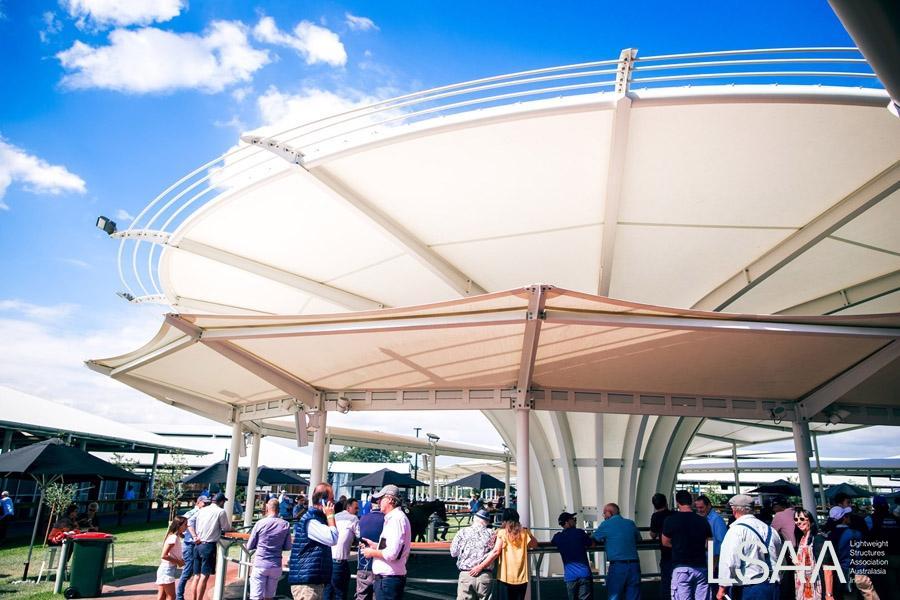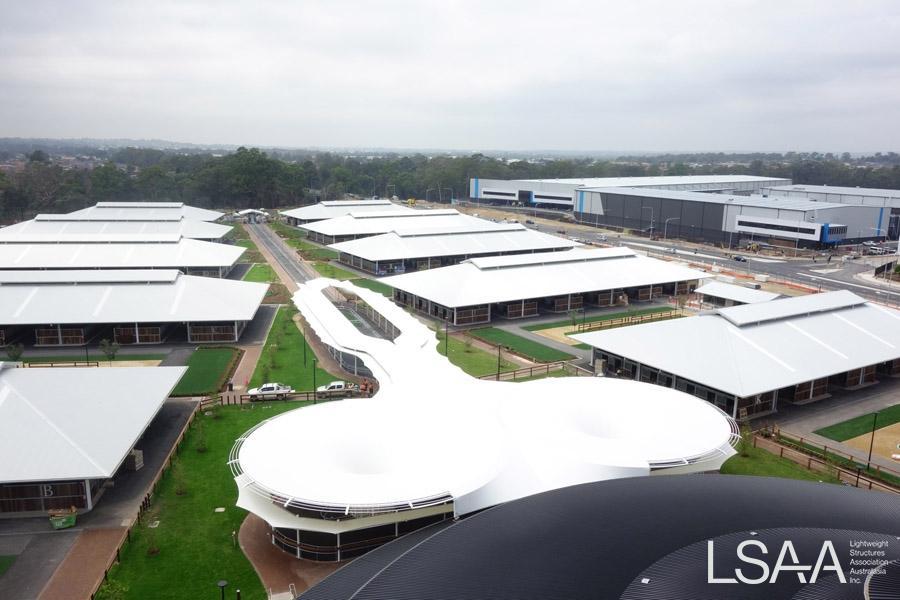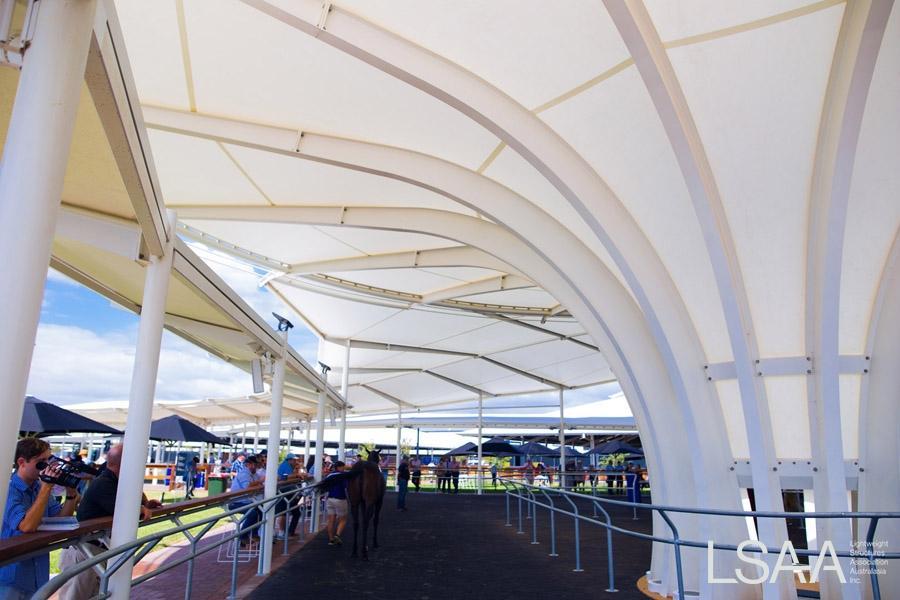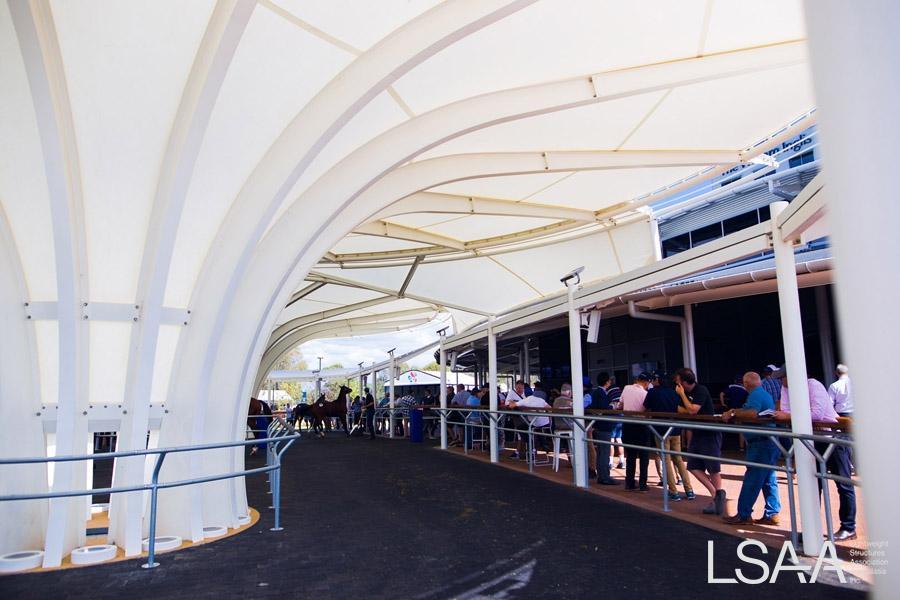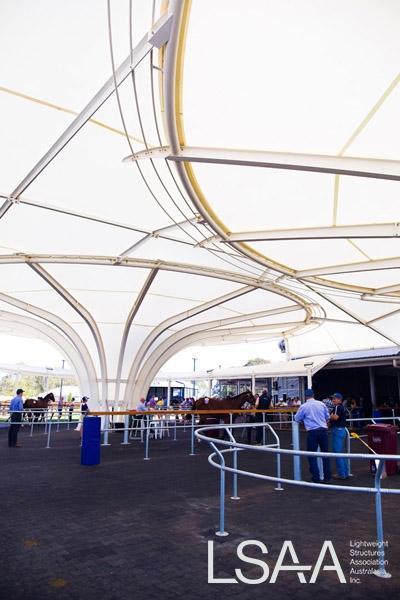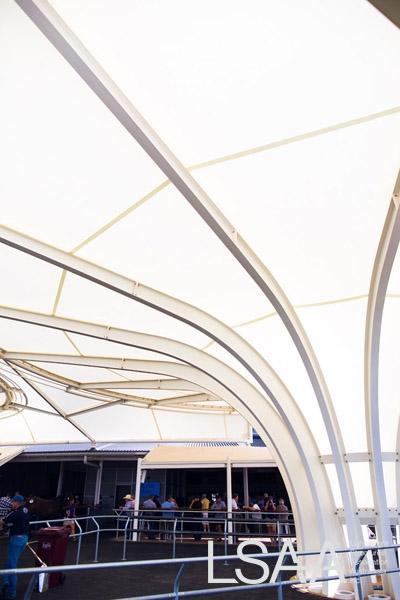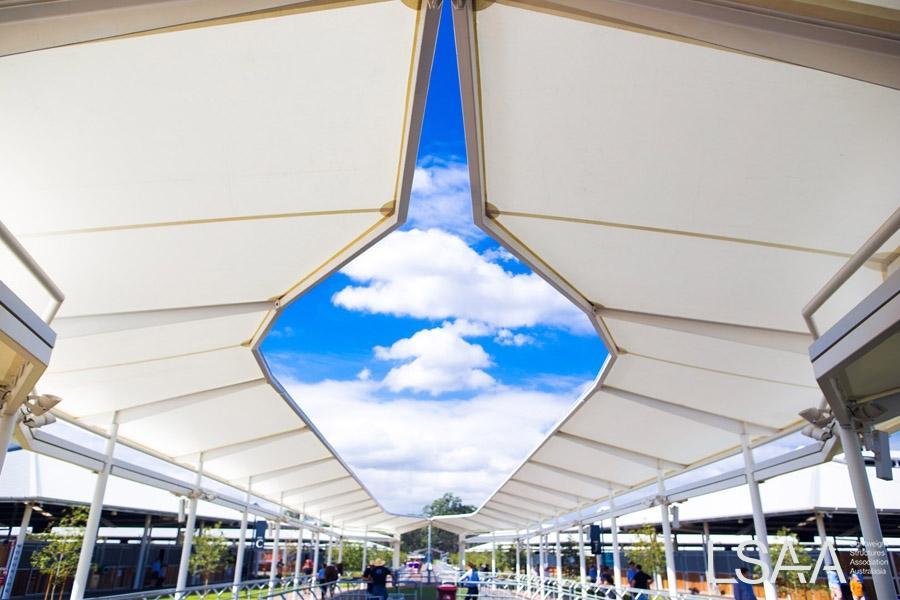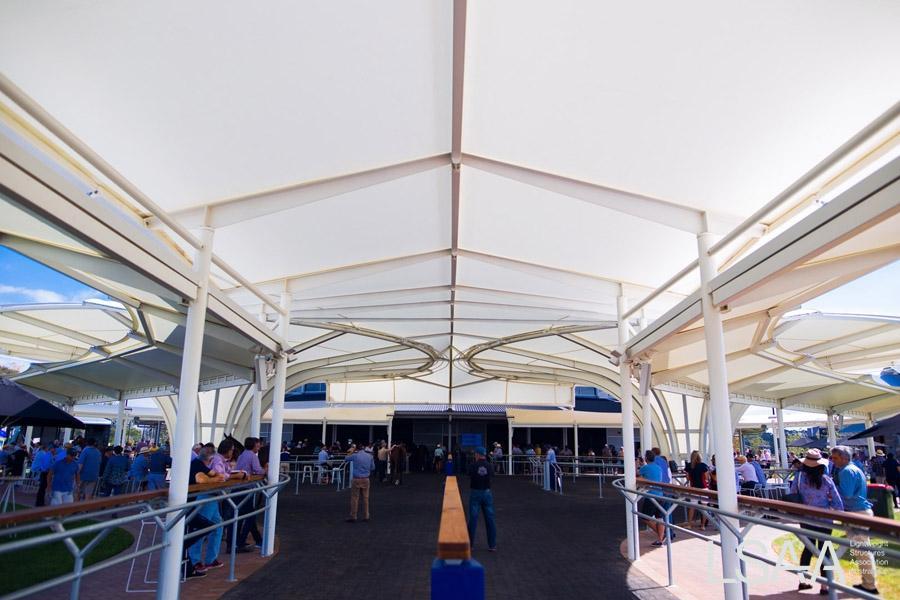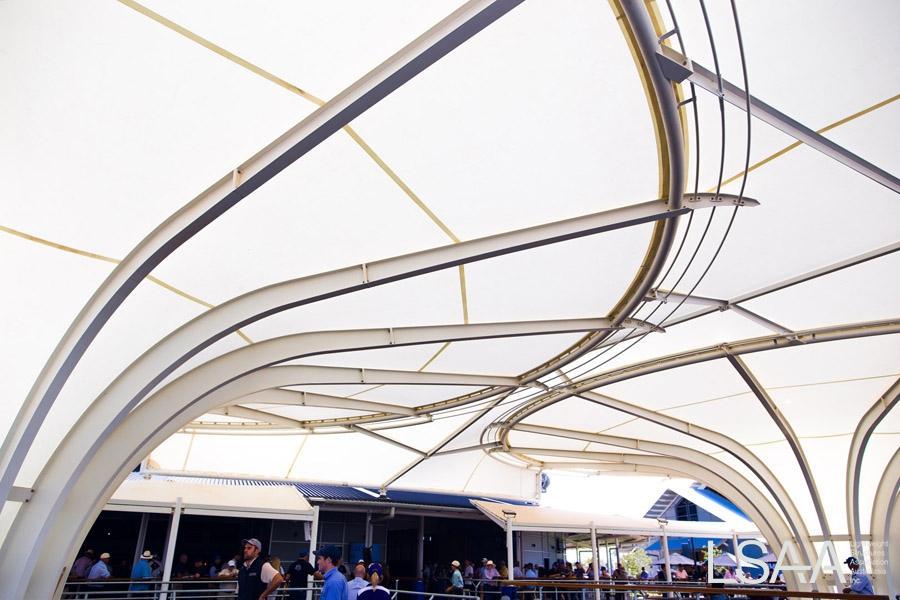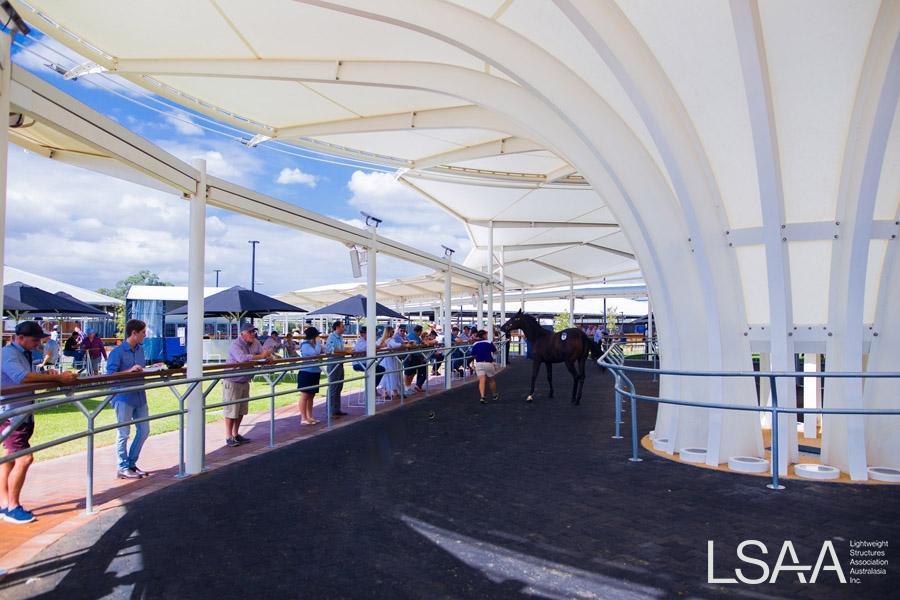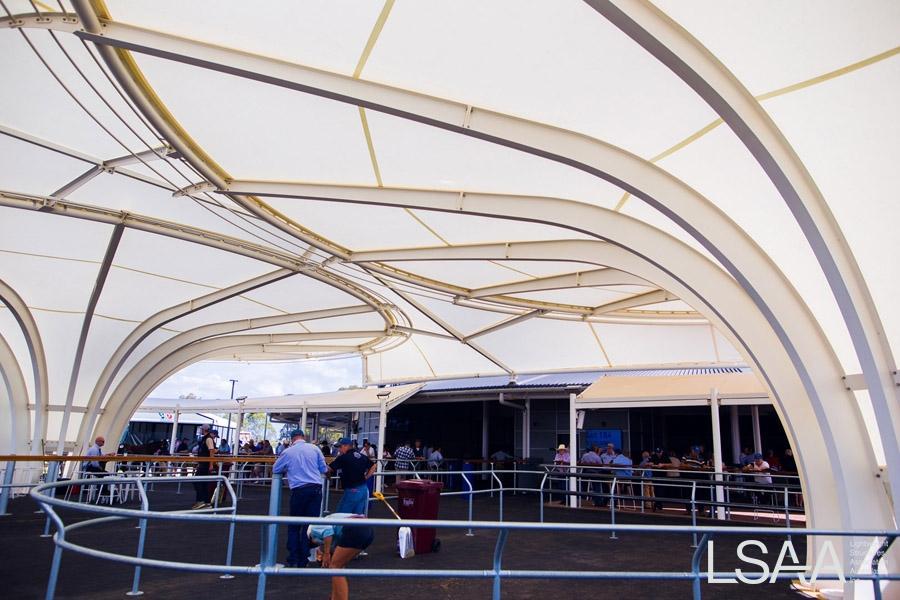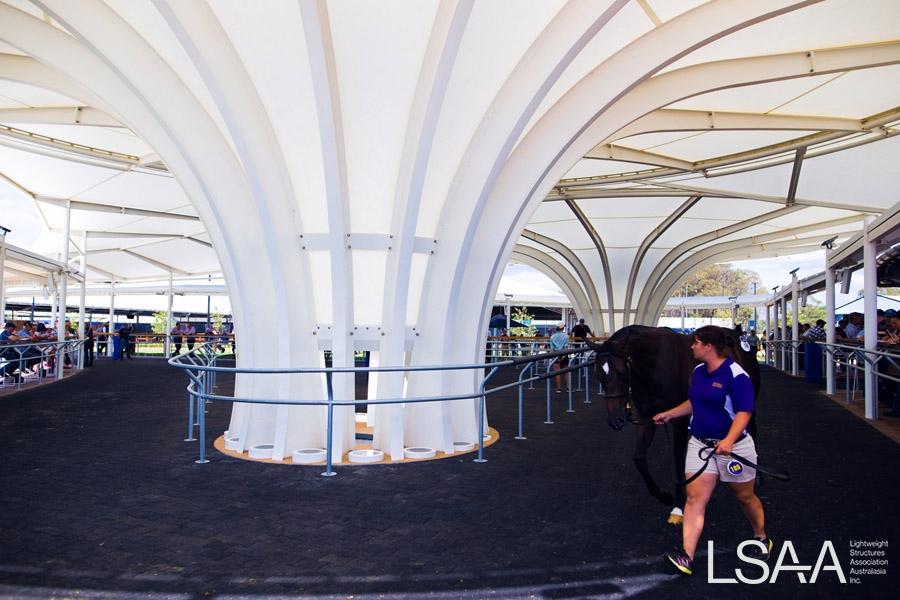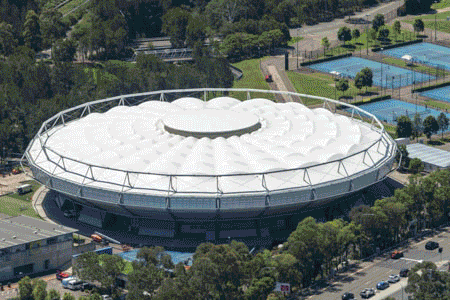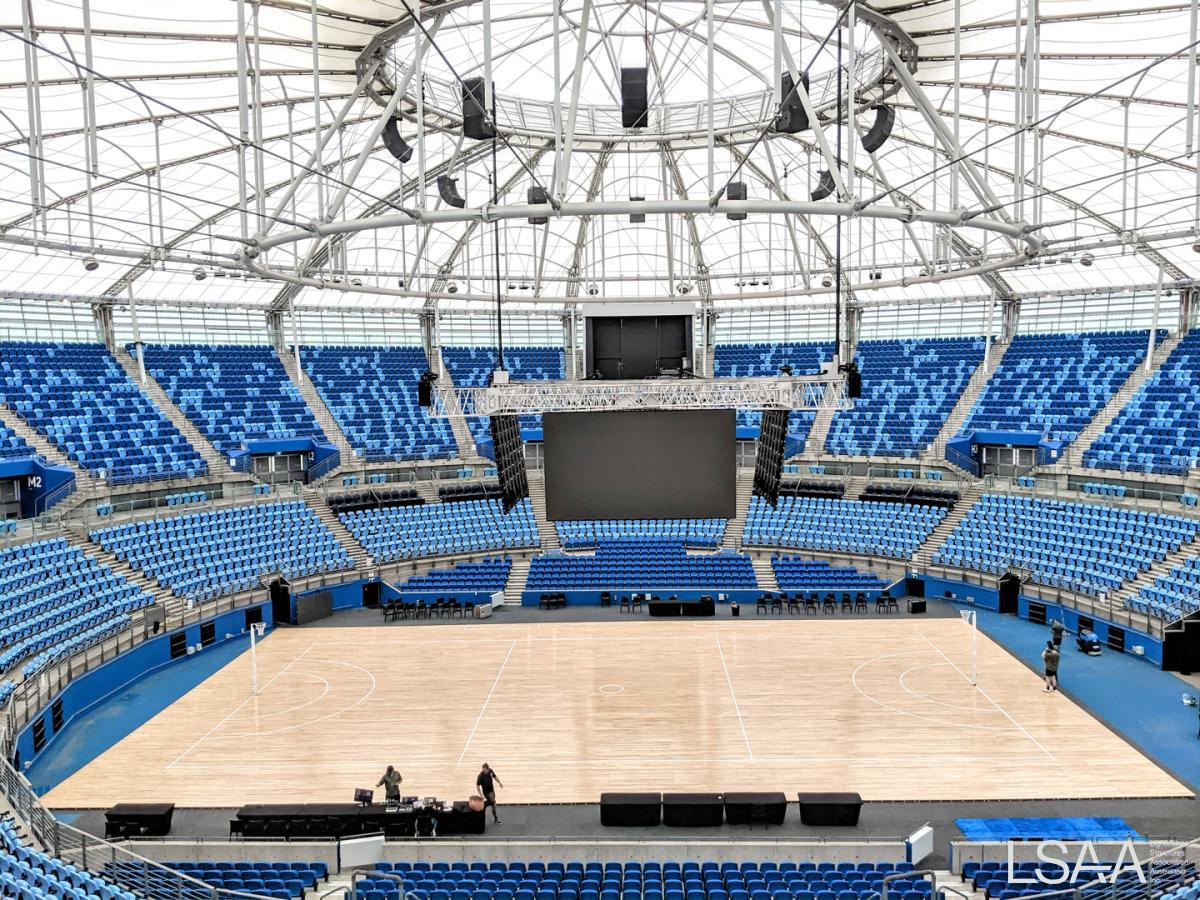Commendation LSAA 2018 Design Awards Large Structures (Cat 4, 4433)
Application: Large canopies with a fabric surface area over 2800m2 to cover multiple areas at the Inglis Selling Centre Warwick Farm Racecourse
PROJECT DESCRIPTION:
The project was the design, fabrication and installation of multiple decorative and functional canopies for the Inglis Selling Centre at Warwick Farm Racecourse. With an overall Chukoh FGT800 PTFE fabric area of approximately 3060m2, the project covered multiple areas and structure types - “Trees” to cover the horse parade ring; a shelter canopy for the patron walkway for the pre-parade ring; a canopy for the wedding pavilion, and awnings for the hotel.
DESIGN / FABRICATION / INSTALLATION BRIEF
The project was part of a new complex for the Inglis Stables’ relocation from Newmarket to Warwick Farm. The site was designed as a total facility for horse buyers and for corporate and other events.
The pre-parade ring incorporates “fig tree” structures which were designed to pay homage to the Inglis heritage of a large fig tree at the previous Newmarket location. These “trees” were complex to both fabricate and install. The fabrication was difficult with flat surfaces descending into steep cones. The tree steel installation required all our highly experienced project personnel to be involved in developing the method to ensure stability of the framework until the structure became self-supporting. Only some of the fabric joints were mechanical; with the majority being site-welded field joints.
The patron walkway creates a spine down the centre of the complex and provides a vista from the parade area towards the river. This walkway required both drainage and electrical conduits to be installed but hidden to ensure the architectural intent. This was achieved through the use of hidden gutters above the edge beams on alternating columns; with the alternate columns carrying the electrical connections while directing water to the other columns.
The wedding pavilion is set amongst the gardens and provides an intimate gazebo-type structure to create a sheltered space for wedding ceremonies. The hotel at the site required awnings on two sides.
This project required a large amount of co-ordination between contractors. A hard finish date meant that towards the end of the project there were many trades working at the site; and each trade had to have access to their required area of operation.
STRUCTURAL SYSTEMS
The main parade structure is an integration of a PTFE membrane awning cover over the horse and pedestrian walkway leading to the two central inverted cones. These cones have custom profiled tapered beam sections to represent fig tree trunks and radiating branches. Along the awning covers, gutter beams and columns were used as downpipes to reduce the amount of visual services. The architectural intent was strictly followed to best meet the design brief, this challenge was met with close and repeated coordination of the structural system with the architectural scheme.
MATERIALS
The customer expressed the desire for their new stable and buying complex to be a long lasting location for their business. The project utilized Chukoh FGT800 PTFE for both longevity and durability as well as the lower lifecycle maintenance costs expected compared to PVC products.
FABRICATION
The structural steelwork involved a large amount of custom tapered sections along with highly curved architectural elements. Accordingly, the fabrication work had to be to a very high standard to deliver the required finish quality. Reference samples of welding were prepared and painted so that the final outcome could be assessed ahead of fabrication. Multiple reviews and inspections through fabrication were undertaken to minimize visual issues in the finished product – a key focus of the project architect was to have a finished product of the highest visual quality.
PTFE welding was undertaken in the traditional manner in the factory using heat and pressure welding. To minimize the number of unsightly field joints and closures in the fabric skins, most field joints and flashings we site welded; this enhanced the lightweight nature and aspect of the roof.
COLLABORATION, CONSTRUCTION AND MAINTENANCE
The construction required a large amount of steelwork to be constructed prior to fabric installation as there needed to be enough lateral load resistance in the steel frame before wind loads could be resisted adequately. Some of the cantilever areas required on tension ring action to resist loading and it was imperative that the steelwork was fully installed prior to fabric installation. Detailed structural analyses were undertaken of the various install stages to work out an erection methodology that minimized the amount of propping and temporary bracing required; without this it would have been very easy to permanently lock deflections and geometrical discrepancies into the final project.
A large amount of construction communication and coordination on a daily basis was key to a smooth install due to the other works and trades on site.
Credits:
Entrant: MakMax Australia
Role played by Entrant: Designer, Engineer, Fabricator, Installer
Location: Warwick Farm, NSW
Completed: January 2018
Client: Romaldi Constructions Pty Ltd for City of Playford
Architect: TIA Consulting
Engineer: MakMax Australia
Ref Gallery: 2018_Images/Award_Entries/4433_Warwick_Farm DPID 266


